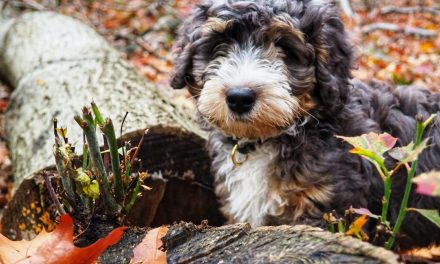Different types of bernedoodle Generations
Before purchasing any doodle, it’s useful to know there are different types of generations. The most typically used generations types are F1, F1B, F2, F2B, and F3. In this article, I will explain these terms, and because this website is mainly about Bernedoodles, I will use this (mixed-)breed as an example. Stay tuned!
Breeding for dog traits
The gorgeous Bernedoodle results from crossbreeding Poodles with Bernese Mountain dogs, which makes it a hybrid breed. Hybrid breeds are also known as a “designer breed” because they were bred to have both parents’ lovable qualities. And dogs are able to interbreed because, in evolutionary terms, they belong to the same species, called Canis familiaris domesticus (https://en.wikipedia.org/wiki/Dog).
The popularity of hybrid breeds is rising. This because people prefer certain dog traits which don’t exist in purebred dogs. For example, many adore the minimal shedding and intelligence of the Poodle. That’s why some breeders are purely focused on crossbreeding. Crossbreeding enables breeders to produce offspring with certain traits from both purebred dogs.
And because purebred dogs generally experience more issues compared to hybrid breeds, I honestly think it’s a smart move to get a hybrid dog. For example, the Bernese Mountain dog has a much shorter life expectancy in comparison to the Bernedoodle because cancer is frequently involved. Unfortunately, my Bernese Mountain Dog passed away at an early age of 6.5, which is very low compared to dogs’ average life expectancy.
When breeders keep crossing Bernedoodles to get the lovely unique traits (selective breeding), they will eventually get a purebred Bernedoodle breed. However, this takes a very long time as it will take at least seven generations to realize this.
Different hybrid generations
There are different types of generations. These generations are related to the amount of genetic material (DNA) exchanged during sexual reproduction. Because I understand you don’t have much knowledge of genetics, I will try to explain this in one sentence: The DNA of both parents will influence the appearance (phenotype) and characteristics of your dog, in addition to environmental factors.
Parent generation (P)
When breeders cross two purebred dogs, the result will be purebred offspring. Each parent will pass on 50% of its genetic material (DNA) to its offspring. That’s why the offspring contains 100% (50% + 50%) of their purebred parent dogs’ genetic material. Phenotype and characteristics will be more predictable compared to hybrid breeds.
F1 Bernedoodle generation
The F1 Bernedoodle generation consists of 50% Bernese mountain dog and 50% Poodle DNA. The appearance of the offspring may be very different, depending on the purebred parent dogs. Also, the character of the dog might be a bit more unpredictable. However, when breeders cross two great parent dogs they will probably have a higher chance of getting lovely offspring. When the mother dog has already produced quality (hybrid) offspring, she is more likely to create them in the future. That’s why it is important to ask the breeder for the number of litters.
F1b Bernedoodle generation
The F1B Bernedoodle generation consists of 25% Bernese Mountain dog and 75% Poodle DNA or vice versa. Breeders use this method to strengthen the traits found in the parent’s breed (P). The offspring is more likely to have Poodle traits in proportion to traits of the Bernese Mountain dog. For example, chances of offspring with a non-shedding coat are higher. This type of coat is beneficial for people with allergies.
F2 Bernedoodle generation
The F2 Bernedoodle generation results from crossbreeding two F1 Bernedoodles. Both F1 Bernedoodle generations consist of 50% Poodle and 50% Bernese mountain dogs. Both parents pass on 50 / 2 = 25% of Poodle and 50 / 2 = 25% Bernese mountain dog. That’s why the offsprings genetic material will consist of 50% Poodle and 50% Bernese mountain dog.
A breeder may decide to cross two F1 Bernedoodles when he/she likes Bernedoodle traits. There will be a higher chance the desired traits remain in comparison to crossing two different dog breeds.
F2B Bernedoodle generation
The F2B Bernedoodle is the result of an F1 parent and F1 backcrossed (F1b) parent. By this method, it’s more likely to get non-shedding offspring, in comparison with the F1 and F2 generation.
F3 Bernedoodle generation
Crossing F2 Bernedoodles x F2 Bernedoodles. 50% of the genetic material is derived from Bernese mountain dogs and 50% of Poodle. This is because both F2 Bernedoodles contain 50% Bernese Mountain dog DNA and 50% Poodle DNA. Each F2 dog will pass on half of this genetic DNA to there ofspring, so the ofspring will contain:
- 50% / 2 = 25% Bernese mountain dog DNA, from F2 (parent 1)
- 50% / 2 = 25% Poodle DNA, from F1, from F2 (parent 1)
- 50% / 2 = 25% Bernese mountain dog DNA, from F2 (parent 2)
- 50% / 2 = 25% Poodle DNA, from F1, from F2 (parent 2)
- 25% + 25% + 25% + 25+ = 100% DNA for offspring F3, of which 50% inherits from the Bernese mountain dog, and 50% inherits from the Poodle.
Multi Bernedoodle generation
For example, a cross between an F2 Bernedoodle x F4 Bernedoodle. 50% inherits from the Bernese mountain dog, and 50% inherits from the Poodle.


Recent Comments